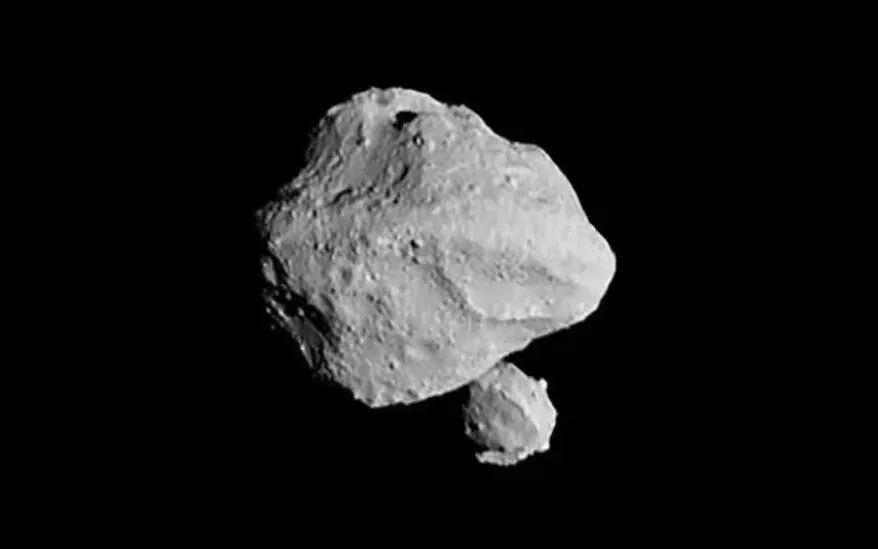
The asteroid is scheduled to make its closest approach at 2.41pm GMT on Friday - NASA/JPL-CALTECH/ASU/SWNS
The Telegraph: An asteroid the size of a football pitch will zoom past Earth on Friday, coming close enough for Nasa to issue a warning.
Asteroid 2008 OS7 is classified as “potentially hazardous” and is expected to come within 1.7 million miles of Earth – about seven times further out than the Moon – at a speed of around 11 miles per second.
Although that may seem like a long way off, it is close enough in space terms for Nasa to add it to its “asteroid watch”, and experts will be keeping a close eye on its approach.
The asteroid, which flies past Earth every 962 days, is scheduled to make its closest approach at 2.41pm GMT on Friday.
It is deemed potentially hazardous because it comes reasonably close to Earth, and could cause significant damage in the event of an impact.
It is estimated that a strike by an asteroid 1,500ft in diameter landing on a city would cause a crater 11 miles wide, instantly vaporising over 2 million people. The impact would be the equivalent of 141 gigatons of TNT, and the fireball released would kill a further 11 million people.
Dr Minjae Kim, a research fellow in the University of Warwick’s physics department, said: “We don’t need to worry about it too much as this asteroid will not enter Earth’s atmosphere, while it will still approach close to the Earth.
“There are millions of asteroids in our solar system, of which around 2,350 asteroids have been classified as potentially hazardous.
“One of the most intriguing aspects of the 2008 OS7 is its estimated diameter based on its luminosity and reflective properties, which ranges from 725ft to 1,622ft.
“This places it in the category of a small to moderately sized asteroid, roughly equivalent to the size of a football field.”

Asteroid Dinkinesh, which passed near Earth on Wednesday, is pictured in a photograph taken by the Lucy spacecraft - NASA/GODDARD/SWRI/JOHNS HOPKINS APL/NOIRLAB
Asteroid risk and monitoring is carried out by the Center for Near Earth Object Studies at Nasa’s Jet Propulsion Laboratory.
Most asteroids and comets have orbits that do not bring them very close to Earth, and they are only classed as dangerous if they come within 4.6 million miles and are larger than 460 feet.
The next significant approach to Earth by a potentially hazardous asteroid will be by 99942 Apophis on April 14, 2029.
Nasa’s Osiris-Apex spacecraft is currently headed to the asteroid to study the physical changes that will result from its close encounter with Earth.
Apophis was also predicted to get dangerously close to Earth in 2068, but experts have since revised their calculations and no longer see it as a risk.












Leave a review